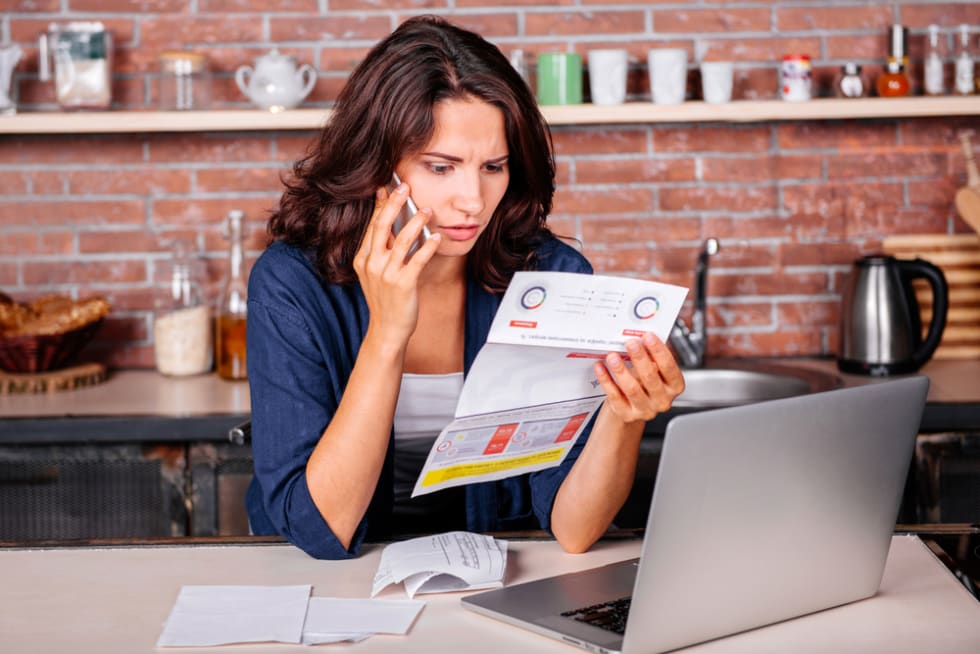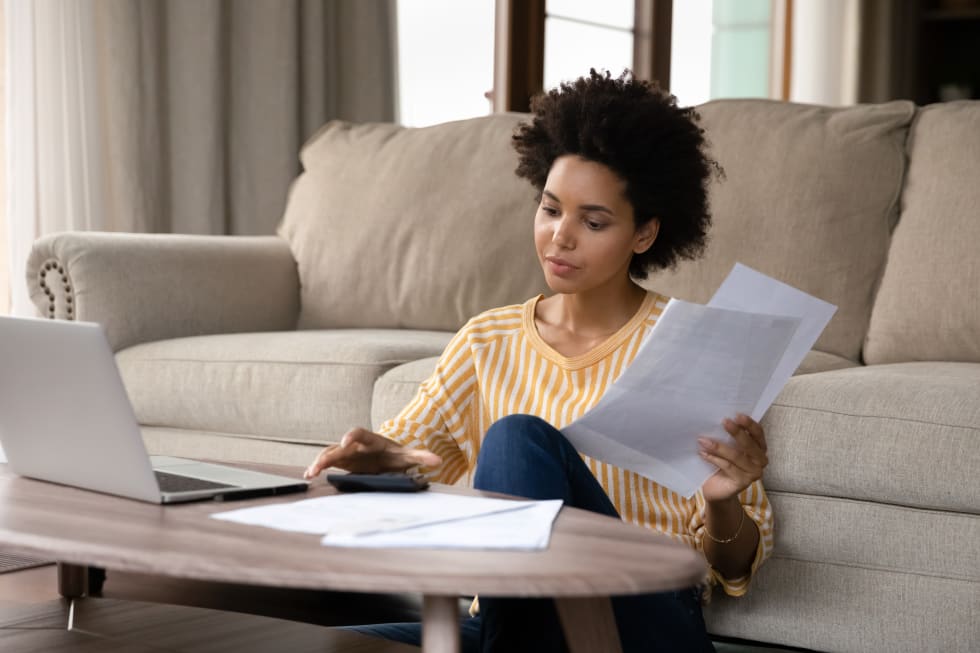The Pembroke
- 102 units available
- 1 bed • 2 bed
- Amenities
In unit laundry, Granite counters, Hardwood floors, Dishwasher, Pet friendly, 24hr maintenance + more

You’ve found a great apartment, signed the lease, and scheduled the movers. But before the big day, you’ll need to set up your apartment utilities. For most rental units, you’ll have to choose a provider, transfer or cancel services, set up utility accounts, and schedule service start dates.
If that sounds like a big to-do list, you’re right. In this guide, we’ll walk you through setting up apartment utilities, including electricity, water/sewer, trash, natural gas, internet, and security systems.

Before signing your lease, discuss with the landlord what utilities or amenities are included and what aren’t. Some apartments allow tenants to choose their own providers, while others require tenants to select from a list of approved providers.
There are six main types of apartment utilities:
Depending on your apartment, you may use electricity solely or utilize other utilities, such as natural gas. Some apartment complexes charge a flat service fee for water, sewer, trash, and internet, which you pay in addition to the monthly rent.
Understand what’s included in your lease and monthly payments and what’s required of you as a renter, including which utilities are necessary for your rental unit.
Some apartments include utilities in the monthly bill. This differs from apartment to apartment, and you should check with your landlord to discuss what is included in your monthly payment.
Apartment units may include trash, water, and sewer with the fees baked into the monthly rent, but the property may require tenants to set up their own gas, electricity, and internet. While other apartments may require tenants to set up all utilities.
If you’re renting an “all-bills-paid” apartment, this typically means that you’re paying a flat fee for everything, including the rent and all utilities. In these rental setups, the landlord covers all basic utilities, including electricity, gas, water, trash, and sewer.
Some units may also include utilities such as internet and cable. Because everything is included, your overall rent will be higher than that of other rental units in the area.
Here’s a timeline to make sure everything is ready before you unpack:
Research possible utility providers in your new area. Compare companies to find the best rates, coverage, or plans. Certain providers may offer additional benefits and coverage in specific areas, which can benefit you in the long run.
For example, an internet service provider may offer discounted rates if you bundle internet and cable services together and sign a one-year contract.
After selecting your top choices for service providers, it’s time to narrow down your move-in date. You’ll want to have a move-in date so you know when to turn on your utilities, which usually aligns with your lease start date.
Utilities included in your rent should be set up by the landlord, and you typically don’t have to do anything to ensure they’re working upon your arrival.
If you’re moving from one area of a city to another, you may be able to transfer your utilities. Utility companies may allow you to do this online or via mobile applications.
Three weeks before your move-in date, you should set up your new utility accounts. You’ll need information, including your identification, move-in date, and payment methods for the bills.
After setting up your new accounts, you can also choose a service action day for your utilities. Ensure they are aware of the day to turn on utilities and schedule appointments, such as internet connection, as early as possible.
On your moving day, check to ensure that the utilities are functioning correctly. This should include everything from water to heating and internet.
Here are the basics to setting up your apartment utilities.
Apartment electricity should be easy to switch on. You’ll create an account and choose an energy plan through an online portal or via phone, and your service could start in a day if needed. We recommend scheduling your utility start date at least one week in advance to ensure it is switched on on time.
Create an account with a natural gas service provider and then request a start date online or by phone. The company may send someone to the apartment if the natural gas isn’t turned on. Schedule your natural gas service start day two weeks in advance so the company can visit if needed.
After setting up an account, usually through the city or county’s government website, you can choose a start date. Try to schedule this around two weeks before your move-in date.
The Internet is a basic requirement for many renters. After selecting your preferred provider, consider bundling other services, such as a mobile plan, cable, or streaming services, to save money. Depending on your location, you may be able to obtain fiber-optic connections, which offer faster download and upload speeds, as well as higher bandwidth.
If you need installation services, be sure to schedule them at least two weeks in advance, if not more.
Apartment complexes typically have a preferred supplier for trash collection. Sometimes, the service fees for trash collection may be included in your rent. If not, you can set up your trash service with the county or city. Do this at least one week before moving in.
Renters with a security system will need to contact us to set up their account and select a start date. Some apartment communities may have a system installed in the unit, and you need to contact the company to activate the service. If you need to install a security system, schedule this at least one week before your move-in date.
Renters moving within a city or locally within a county who have utility accounts in their name should be able to transfer them to their new address. Most utility companies allow you to transfer these online using a portal or mobile app.
If you’re considering switching service providers, you can compare the different companies using search tools and price comparisons.

Most utility companies will send a monthly invoice with a due date, and renters must pay it before the due date to avoid late fees or having their utilities shut off. Companies allow you to choose between paper statements and online notifications.
Setting up utilities might not be the most exciting part of moving, but it’s one of the most important. By planning ahead—comparing utility providers, scheduling connection dates, and confirming services before move-in—you’ll avoid surprises and start life in your new home stress-free. Once the power, water, and Wi-Fi are on, you’re officially ready to settle in.
Ready to find your next apartment or a place with utilities included? Take our quiz to get started. A few minutes will save you 50 hours of searching.
Utility providers may charge an initial start-up fee that ranges between $20 and $100. The fee may depend on how much your overall utilities will cost or a prediction of that cost.
A utility setup fee is a charge by a utility provider to activate their service, such as electricity, water, and gas.
Yes, typically when setting up an account with a utility provider, a renter must provide a lease. The lease may include the start date and activation date for the utilities.
The cost of utilities depends on the number of people in your family, usage, and square footage. Houses are typically larger and have more square footage, which means they require more heating and cooling. However, some apartments may also be large and require more utilities.
While it is more common to find apartments that don’t include utilities, it’s equally easy to find apartments where utilities are included in the price. Use search tools to find all-inclusive, utility, and rent prices on search platforms such as Apartment List.
If a utility isn’t working on your move-in date, you should contact the utility provider immediately to ensure they have the correct start date for your utilities. If there is a different issue, request help solving the issue.
You can save money on utilities by bundling services, such as Internet, mobile, phone plans, and cable, and monitoring your usage to ensure it doesn’t exceed a specific limit.
You can usually switch utility providers after the contract ends. Most contracts are for one year of services.
There are many ways to split utility costs and fees between roommates. Three of the best ways to split these costs are equally, by usage, or by a fixed amount.

In unit laundry, Granite counters, Hardwood floors, Dishwasher, Pet friendly, 24hr maintenance + more
In unit laundry, Patio / balcony, Granite counters, Pet friendly, Stainless steel, Walk in closets + more